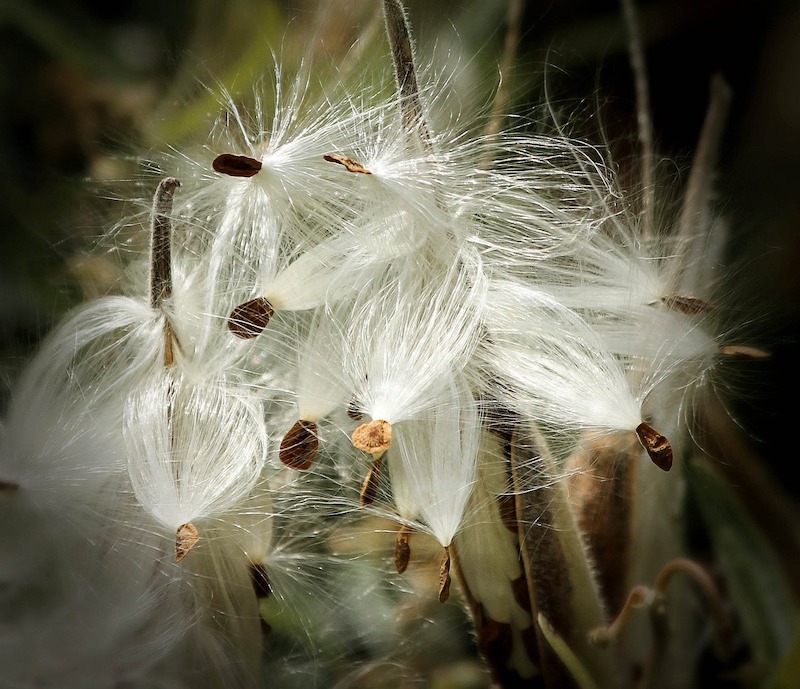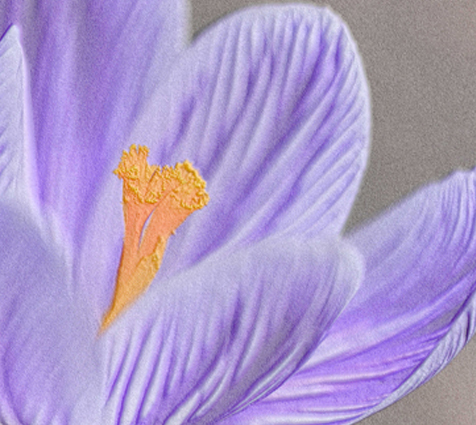Michele Root-Bernstein
Two Favorite Haibun
Towards There

Image by JamesDeMers from Pixabay
The task set seemed simple: two haibun, two readings—and resonance. In preparation, I ran a marathon through the many haibun that have crossed my path in the last several years. The challenge of matching a favorite haibun written by someone else with a favorite haibun of my own has been anything but easy.
I much admire “Kodachrome” by Cherie Hunter Day, “Possessions” by Tia Haynes, and “Anniversary” by Margaret Dornaus for their sensitive takes on the artifacts left behind by other lives. I might have paired any one of these with one of my own ruminations on the generational flotsam and jetsam that piles up along the path. An antique souvenir, an unfinished cross-stitch on a length of linen, a yellowing receipt for funeral services—all call on my imagination to plumb the unknown experiences of father, mother, stillborn sib.
I might have paired Jim Kacian’s “What Remains,” a fine minimalist riff on the interplay of verbal thought and sensory experience, with my piece “A Sapling Tree Bends Down to Weep.” That haibun focused on my dad’s wartime poetry: his observation that “words do not bleed,” they do not “belly lie”; mine that words were “all he had of dignity.” Or I might have paired Kacian’s distinction between word and phenomenon with how long it took me to realize, when my daughter said her name was too pink, that this was not a metaphor but her synesthesia bleeding sound into color into sense. Then again, I might have paired Kacian’s terse prose to my “Stump,” about the senile dementia of a friend, her grasp of language—and existence—stripped away:
early au
the un sets
in a low tree
I might have paired Melissa Allen’s “What Was His Is Mine“—a brilliantly patterned look at the world through her father’s eyes—with my effort to see through my mother’s in “Perspectives,” where I recalled a mountain walk in childhood. Or I might have paired Keith Polette’s “Invitation,” a stunning evocation of no-mind, with the “game with no name” I recalled playing in “Heart-Springs.” A friend and I would repeat a word until it lost its semantic meaning and became something else entirely—the unison sound of the whole world drumming.
I might have written up any one of these pairings for this essay. I might have done. But for me, the point of reading haibun written by others has rarely been to find echoes of my own work. Rather, I have wanted to learn from others how I might grow as a poet and writer. As Kenneth Koch put it in Making Your Own Days, “Each poet shows other poets how to write and how not to, as if saying, ‘Use me but don’t sound like me; use me to make something else.’ . . . Other poets’ poetry, for poets, then, is a dictionary, a grammar, and a vocabulary, a place to begin.”
Ideally, then, I would pair Joseph Aversano’s “The Gone Missing,” a remarkable haibun that lately has me stopped in my tracks, with a haibun that I am not yet thinking through, much less writing—a glimmer of an idea, a half-imagined feeling, a sketch for a piece.
Impossible, that.
Instead, I find myself rereading “Sticky Fingers,” a haibun I wrote some years ago, in light of Aversano’s meaning-making.
The Gone Missing
It happens all the time. I point. Then say, I am going up towards there. And less determined than bewitched, I go at once. And without the proper footwear. And without telling anyone. Other than the ones who would come, ones who would never think to call me back.
the act in its cataract self
I first came across “The Gone Missing” at the Haibun Film Festival held at the 2023 Haiku North America conference in Cincinnati, Ohio. Five film adaptations of Aversano’s piece were chosen for screening, making for an intense viewing experience. (These films may be viewed at https://www.movingpoems.com/poet/joseph-aversano/). What sticks with me, all these months later, is the language. The rhythms throughout are hypnotic in effect, especially the iambic feet leading in and out of the prose; the buried rhymes a music that adds tensile strength to the whole. There is also the sense that follows the song, that brings me back again and again.
Each element of this haibun balances skillfully between the specific and the abstract, both simultaneously evoked. The title suggests a story or meditation on loss or, more accurately, active departure, though of what is uncertain. The prose sets down in an undetermined all-time and anyplace, and the narrating “I,” prime mover of the piece, remains a visual blank. The one detail given, “without the proper footwear,” tells what’s not there physically and yet what is there psychologically. The pointing, the going “at once,” with no thought of return, reveals a deep-seated, impulsive need for escape, even rapture.
At this point, the reader may be pardoned for conjuring some particular narrative: certainly, the filmographers did so, with visuals of graffiti-scrawled underpasses, deserted rooms, airborne flights above the clouds. But the haiku quickly reasserts the primacy of the conceptual: the “act,” the “self”—nebulous constructs only known to us in and through the things in the phenomenal world, in this case a “cataract.” Cataract may refer to a downpour, a flood, a rushing rapids or precipitous waterfall, all of which speak to the impelling nature of the act. It may also refer to a clouding in the lens of the eye that inhibits vision, which speaks to the unfathomed motivations of the narrating “I.” Read disjunctively, “the act in its cataract” (its rush and/or blindness) is inextricable from “its cataract self,” or simply its “self.” Doing and being are inseparably linked in the blinded leap “towards there.”
To my mind, “The Gone Missing” is a tour de force meditation on the modern urge to break free of a prescribed life or, more narrowly, an existential mid-life crisis. Because so much remains unsaid, so much may be understood. On this basis alone, it might seem strange to consider “Sticky Fingers,” a haibun channeling my very earliest memories from between the ages of two and three. Yet, in the light of Aversano’s piece, I am suddenly aware of a coincident concern for the interstices of language, for the nascent self only known to itself in the act, for the liberating effect of action, even flight.
Sticky Fingers
a collar of yellow straw like sun rays. my itchy neck. why buttons have holes. the shirt on the closet floor and a jumble of shoes.
door open it looks like more rain says mommy. getting her umbrella the dog lets me out. how the mud holds my hands and feet at the never cross road. men in hard hats.
when does it mean. in like a lion out like a lamb. mary had one white as snow. pointing to the clock on the wall tells bedtime. not yet spring. never now. but will be.
stalks
of stuffed pockets
seed wind
If “The Gone Missing” explores the need to refresh the self, “Sticky Fingers” seeks to recover apparently the opposite—those earliest moments of self-discovery. Yet both deal with elemental agency and the words that bind act to identity.
In the prose of my haibun, I tried to capture fleeting images of early experience in very simple phrases, mostly nouns and names, some verbs, simple questions. I remember a fancy shirt I didn’t like; the open door and the thick mud; a perplexment about weather and time. The punctuated space between each image, each idea, which came to me organically in the writing, seems now to stand for the absence of a continuous “I,” one that has not yet fully appeared.
Nevertheless, something about these memories firmly grounds my sense of self. The history of who I am now begins with these first inklings of agency. As title, “Sticky Fingers” relates metaphorically to the stickiness of these core mental images. It also relates to the haiku, both metaphorically and in a literal sense (though I am aware, six years after first writing, that the reference may be lost on readers who have not actually felt a milkweed pod). Around the time that I tore off my shirt, pointed at the clock, and ran away in the rain, my mother placed in my little hands a sticky pocket that grew by the side of the road. See inside, she showed me, seeds to fly on the wind.
Aversano’s work has given me a vocabulary for understanding concerns that, though largely unarticulated, have driven my own writing. Indeed, I now see these same concerns at play in the other possible pairings I posed at the start of this essay. The artifacts explored by Day, Haynes, Dornaus, and myself testify to the people and things “gone missing” in our lives. Kacian’s meditations on language, and mine, too, explore ground between personal experience, internal sensory thought, and the words with which we communicate to—act upon—others in the world. Allen’s empathic shift in point of view, and my own efforts to do the same, suggest the self in escape from its cataract. So, too, does Polette’s un-minded communion with nature and my childhood game enacting words into Word.
There is a further task. It seems simple: Take Aversano’s grammar of the particular abstract, Day’s vocabulary of lost things, Allen’s dictionary of empathic approach and all the rest—take what these poets have shown about writing as a place to begin, and go somewhere else in my own work. Take off, bewitched.
Credits
Melissa Allen: “What Was His Is Mine,” Haibun Today, December 2011; republished in contemporary haibun 2012, v. 13, p. 6.
Joseph Aversano: “The Gone Missing,” retrieved June 27, 2024 from https://www.josephsalvatoreaversano.com/selected-poetry.
Cherie Hunter Day: “Kodachrome,” Modern Haiku 52.2, p. 100; republished in contemporary haibun 2022, v. 17, p.33.
Margaret Dornaus: “Anniversary,” Prayer for the Dead: Collected Haibun & Tanka Prose, 2016 (p. 94); reprinted in Red River Book of Haibun, 2019, v. 1, p. 113.
Tia Haynes: “Possessions,” contemporary haibun 2021, v. 16, p. 63.
Jim Kacian: “What Remains,” contemporary haibun 2021, vol. 16, p. 73.
Kenneth Koch: Making Your Own Days, 1998 (pp. 23-24)
Keith Polette: “Invitation,” Pilgrimage, Red Moon Press, 2020. n.p.
Michele Root-Bernstein: “A Sapling Tree Bends Down to Weep,” Modern Haiku 2016, v. 47.3, p. 78; “Heart-Springs,” Frogpond 2021, v. 44.2, p. 80; “Perspectives,” Presence 76; reprinted in contemporary haibun 2024, vol 19, p. 150; “Sticky Fingers,” Modern Haiku 2018, v. 49.1, p. 89.; “Stump,” Frogpond 2018, v. 31.3, p. 131 (third place, Haiku Society of America 2018 Haibun Awards).
About the Author

Michele Root-Bernstein devotes herself to haiku, haibun, and haiga. The former book review editor of Modern Haiku, she currently facilitates the Michigan-based Evergreen Haiku Study Group. Her e-chapbook Wind Rose (Snapshot Press) received a Haiku Society of America Merit Book Award honorable mention in 2020. She won the 2022 Snapshot Press Book Awards for her full-length collection Plainsong.

I quite enjoyed your thoughts and the comparison pieces you selected (thx for the links). and Aversano & colleagues video haiga/haibun/prose poetry.
Ray Rasmussen
https://rays-blog.ca/
Thank you, Ray! Michele